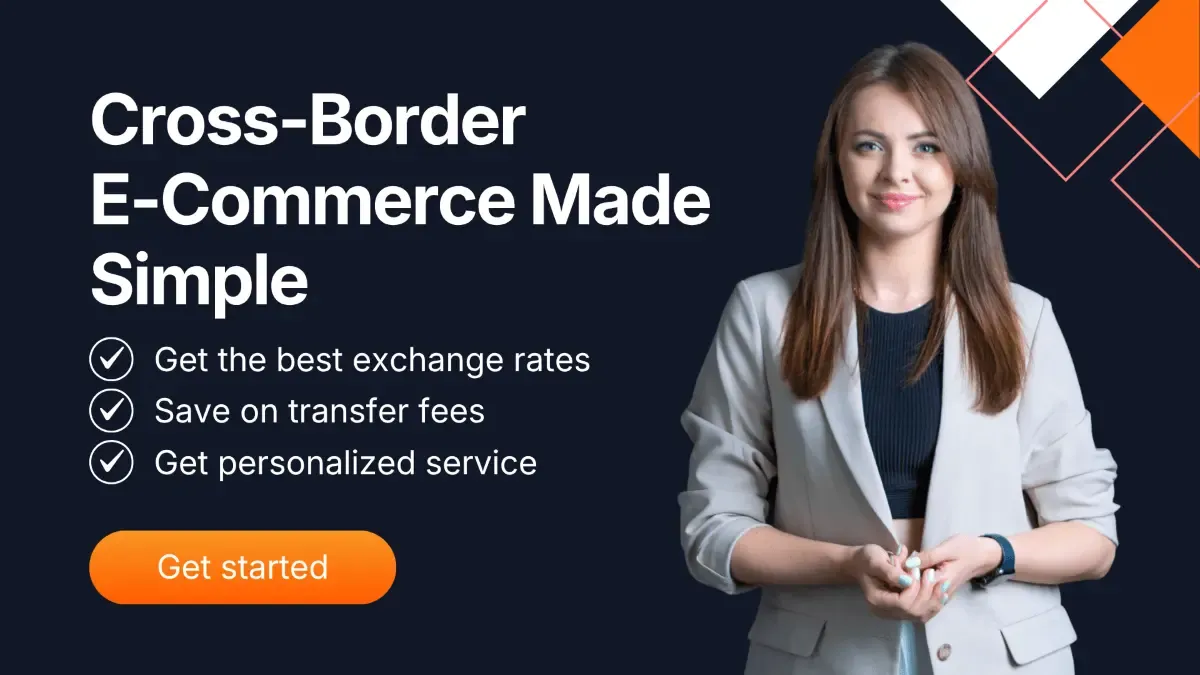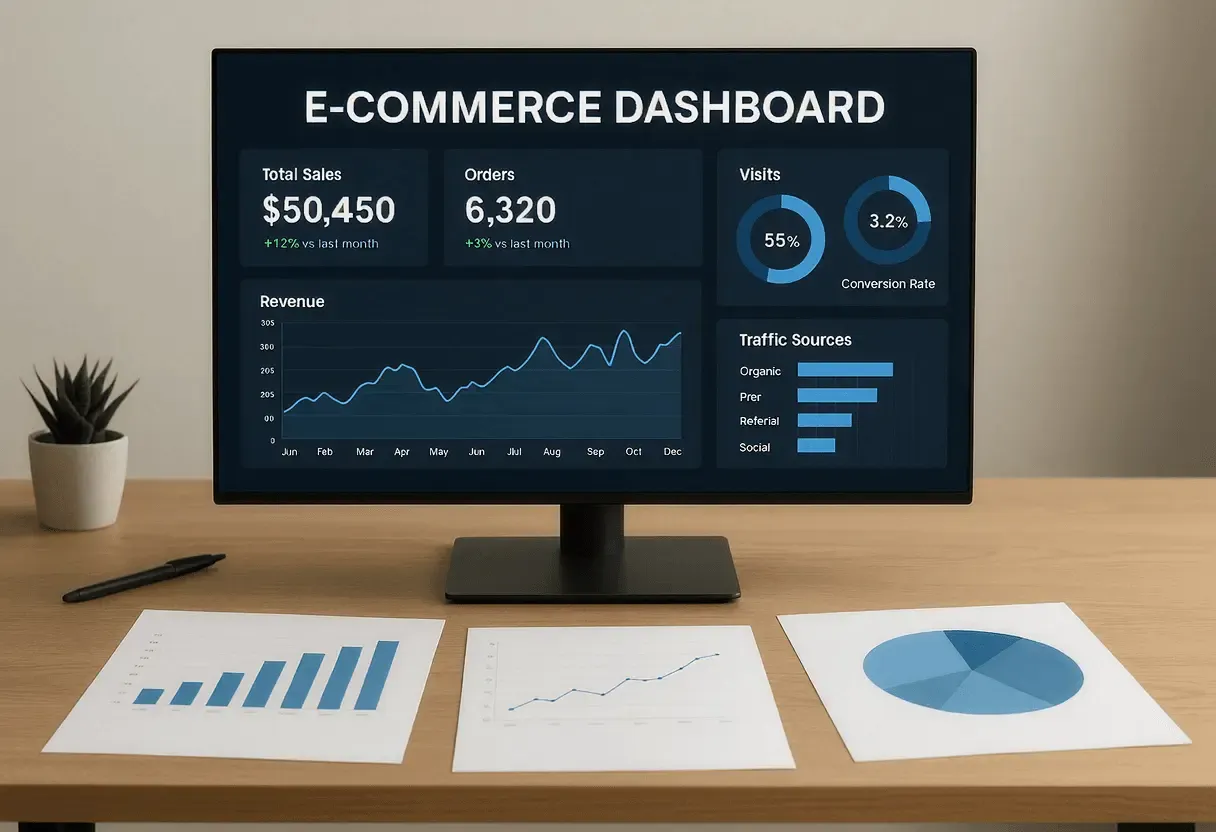Cross-Border E-Commerce Decoded: How to Tackle Global Expansion Challenges in 2025
Canadian e-commerce businesses face major FX challenges when going global, including currency conversion costs, payment delays, and exchange rate volatility. Using an FX specialist like MTFX helps streamline cross-border payments, reduce fees, and optimize international supplier payouts- all while improving your global profit margins.
The world is more connected than ever, and Canadian e-commerce businesses are embracing this global shift. The cross-border B2C e-commerce market and B2B cross-border e-commerce platforms are growing rapidly, opening up international revenue streams. However, venturing into cross-border selling isn't just about setting up a global checkout page. It involves overcoming regulatory hurdles, supply chain complexity, payment issues, and consumer trust barriers.
In this blog, we’ll explore the common challenges faced by e-commerce stores going global in 2025- and how Canadian businesses can strategically navigate them.
1. Regulatory and compliance complexity across markets
Operating across multiple countries means complying with diverse trade rules, taxes, and cross-border e-commerce policies. Each region has unique customs declarations, duties, data privacy laws, and product regulations. For example:
- Selling to the EU requires VAT registration and compliance with GDPR.
- Entering the US market means navigating sales tax nexus rules.
- Countries like China and Brazil have strict import restrictions and documentation requirements.
Why it matters:
Non-compliance can result in penalties, shipping delays, and poor customer experience.
How to fix it:
- Use platforms that offer automated tax calculation and duty collection.
- Partner with customs brokers familiar with your target markets.
- Stay updated on evolving cross-border e-commerce policy trends.

2. Payments friction and foreign exchange volatility
E-commerce payment challenges remain a major barrier to growth. Many businesses struggle to process international payments for e-commerce in Canada efficiently. Bank transfers are slow and costly, credit card processing fees add up, and FX volatility eats into profits.
Key pain points:
- Lack of transparent exchange rates
- Hidden international transaction fees
- Limited payout options for overseas suppliers
- Regulatory complexity in some markets
Why it matters:
Payment inefficiencies can discourage international customers and strain supplier relationships.
How to fix it:
Choose providers like MTFX that offer secure and fast international payments for e-commerce businesses with competitive FX rates and bulk payment capabilities. You can also use global payment solutions in Canada to schedule transfers and hedge against currency swings.
3. Supply chain risks and shipping delays
Logistics can make or break the cross-border experience. As you grow internationally, ensuring reliable delivery, inventory management, and returns becomes increasingly complex. These challenges of global e-commerce are amplified by geopolitical tensions, port disruptions, and rising fuel costs.
Top logistics issues:
- Slow customs clearance
- Inaccurate delivery timelines
- High cost of international returns
- Tracking gaps and lost shipments
How to fix it:
- Work with cross-border 3PLs that offer integrated fulfilment and warehousing.
- Offer localised shipping options and customs-inclusive pricing.
- Use AI-driven logistics platforms to improve routing and reduce delivery errors.
4. Currency and pricing strategy misalignment
Canadian sellers often overlook the importance of tailored pricing strategies. A one-size-fits-all approach leads to poor conversion in foreign markets. With FX fluctuations, static pricing can mean profit loss.
Some common challenges are:
- Rigid pricing in CAD not competitive abroad
- Sudden currency shifts reducing margins
- Lack of clarity for customers shopping in foreign currencies
How to fix it:
- Display local currency pricing using live FX rates
- Offer customers the option to pay in their native currency
- Use currency conversion tools to dynamically adjust prices
5. Marketing localisation and messaging mismatch
A key challenge of B2C e-commerce is assuming that what works in Canada will resonate globally. Language, cultural norms, seasonal timing, and brand perception vary across regions.
Common challenges faces by online sellers:
- Generic product messaging failing to connect
- Canadian holidays/promotions not aligned with foreign markets
- Limited presence on regional platforms
How to fix it:
- Translate content and hire local copywriters or agencies.
- Run region-specific campaigns based on local buying behaviour.
- Segment audiences and personalise offers.
6. Supplier management and international payouts
Another major issue for Canadian e-commerce businesses is managing e-commerce international supplier payments. Vendors may be spread across continents, each requiring timely and secure settlements in different currencies.
Why this matters:
- Missed payments can hurt supplier relationships
- Manual FX conversions cause delays and cost inefficiencies
- Payment errors can halt production
How to fix it:
Leverage a platform like MTFX that supports cross-border payments for Canadian businesses with transparent pricing and automated payout scheduling. Avoid middlemen and high bank markups by using direct FX corridors.
7. Rising operational costs and ROI pressure
Expanding your e-commerce business internationally comes with rising operational costs. From setting up region-specific marketing campaigns to managing cross-border returns, the overhead quickly adds up. Fluctuating exchange rates and high transaction fees further erode your profit margins- especially when converting CAD into multiple currencies like USD, EUR, GBP, or CNY. These realities make it harder for Canadian businesses to maintain strong ROI when selling globally.
Common issues include:
- Expensive international transaction and bank wire fees
- Currency conversion losses impacting margins
- Increased spend on logistics, customs handling, and localised marketing
- Manual FX management consuming staff time and increasing errors
How to fix it:
- Accessing real-time FX tools to monitor and convert CAD to multiple currencies at competitive rates
- Automating cross-border supplier payments to reduce human error and admin costs
- Using consolidated reporting and payment tracking to improve cash flow visibility
- Avoiding hidden fees and improving ROI through lower-cost global payment solutions in Canada

Conquer the global market with the right strategy
From FX fluctuations and B2B e-commerce marketing challenges to compliance, trust, and logistics- challenges of global e-commerce are real, but not insurmountable. Canadian e-commerce businesses that build with agility, transparency, and the right partners will come out on top in 2025 and beyond.
MTFX provides secure, fast, and cost-effective international payment solutions for e-commerce in Canada. Whether you’re selling globally or managing international suppliers, our tools simplify your entire cross-border payment workflow. Open your MTFX business account today and streamline your global e-commerce payments.
FAQs
1. How can I get better exchange rates for USD payments from international customers?
Using a dedicated FX platform like MTFX helps you access competitive USD/CAD rates with low fees, avoiding costly bank markups when converting US dollar revenues to Canadian dollars.
2. What’s the best way to pay overseas suppliers in EUR from Canada?
To send payments in euros efficiently, use a global payment platform that offers real-time CAD to EUR conversion and supports direct payments to European bank accounts with low transaction costs.
3. Can I collect customer payments in GBP and convert them to CAD?
You can receive funds in British pounds (GBP) and convert to Canadian dollars (CAD) using FX services that offer transparent GBP/CAD rates and faster settlements than traditional banks.
4. How can Canadian e-commerce businesses reduce foreign exchange costs?
By using a specialised FX provider instead of traditional banks, you can access better exchange rates, avoid high transfer fees, and automate international payments- all of which help reduce your overall costs.
5. What’s the safest way to send international payments for my e-commerce business?
The safest way is to use a regulated platform with encryption, two-factor authentication, and compliance with global financial standards. Look for providers that specialise in secure business payments.
6. How long do international supplier payments typically take?
With the right payment platform, most international transfers are completed within 24–48 hours. Some regions and methods allow for same-day delivery, especially when using digital FX services.
7. How can I manage FX risk when operating in multiple countries?
Use real-time exchange rate tools, set rate alerts, and schedule payments when rates are favourable. This helps protect your margins and improves financial forecasting.
8. Do I need a business FX account to make cross-border payments?
It’s highly recommended. A business FX account offers tools for managing international payments, monitoring rates, and automating transactions- far beyond what a personal account can handle.
9. What tools can help me optimise global payments in my e-commerce store?
Look for platforms that offer multi-currency accounts, live FX charts, bulk payments, rate alerts, and secure payment workflows designed for e-commerce businesses.
10. How do I choose the right FX provider for my e-commerce business?
Look for a provider that offers low fees, competitive rates, real-time payment tracking, regulatory compliance, and tools tailored to e-commerce operations like supplier payments and global collections.
Whether you’re selling globally or managing international suppliers, our tools simplify your entire cross-border payment workflow. Open your MTFX business account today and streamline your global e-commerce payments.
Related Blogs
Stay ahead with fresh perspectives, expert tips, and inspiring stories.

Keep updated
Make informed decisions
Access tools to help you track, manage, and simplify your global payments.
Currency market updates
Track key currency movements and plan your transfers with confidence.
Create an account today
Start today, and let us take the hassle out of overseas transfers.
